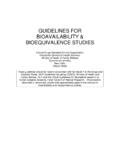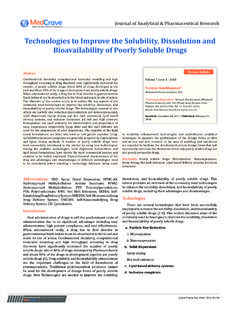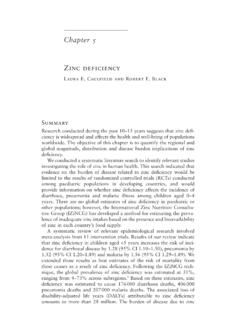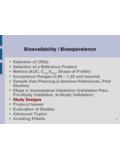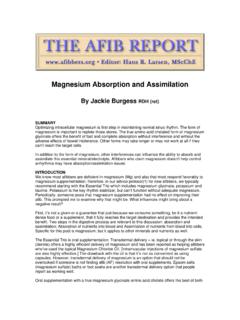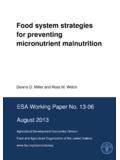Transcription of Medicinal cannabis: Rational guidelines for dosing
1 Medicinal cannabis : Rational guidelines for dosing Gregory T Carter 1*, Patrick Weydt 2, Muraco Kyashna-Tocha 3 & Donald I Abrams 4 Addresses 1 Department of Rehabilitation Medicine 2 Departments of Neurology and Laboratory Medicine University of Washington School of Medicine Seattle WA 98531 USA Email: 3 The Cyber Anthropology Institute Seattle WA 98145 USA 4 San Francisco General Hospital Division of Hematology/Oncology Department of Medicine University of California San Francisco CA 94110 USA *To whom correspondence should be addressed IDrugs 2004 7(5):464-470 The Thomson Corporation ISSN 1369-7056 The Medicinal value of cannabis (marijuana) is well documented in the medical literature.
2 Cannabinoids, the active ingredients in cannabis , have many distinct pharmacological properties. These include analgesic, anti-emetic, anti-oxidative, neuroprotective and anti-inflammatory activity, as well as modulation of glial cells and tumor growth regulation. Concurrent with all these advances in the understanding of the physiological and pharmacological mechanisms of cannabis , there is a strong need for developing Rational guidelines for dosing . This paper will review the known chemistry and pharmacology of cannabis and, on that basis, discuss Rational guidelines for dosing . Keywords Cannabinoids, cannabis , dosing , marijuana, pharmacology Introduction and brief historical background Possibly the first references to the Medicinal use of cannabis are found in the Chinese pharmacopoeia of Emperor Shen-Nung, written in 2737 BC.
3 This document recommended cannabis for analgesia, rheumatism, beriberi, malaria, gout and poor memory [1]. Eastern Indian documents in the Atharvaveda, dating to about 2000 BC, also refer to the Medicinal use of cannabis [2]. Archeological evidence has been found in Israel indicating that cannabis was used therapeutically during childbirth as an analgesic [3]. This use of cannabis continued in the West until the mid-1880s and continues today in parts of Asia. In ancient Greece and Rome, both the Herbal of Dioscorides and the writings of Galen refer to the use of Medicinal cannabis [4]. The Medicinal use of cannabis in western medicine occurred much later.
4 There is mention of it in a treatise by Culpepperwritten in medieval times. British East India Company surgeon William O'Shaughnessy introduced cannabis for Medicinal purposes into the United Kingdom following observations he made while working in India in the 1840s. He used it in a tincture for a wide range of uses, including analgesia [5], and Queen Victoria used cannabis for relief of dysmenorrhea in the same era [6 ]. In 1937, against the advice of the majority of the medical community and much of the American Medical Society, the federal government criminalized non-medical cannabis . cannabis was removed from the United States Pharmacopoeia in 1942 but, up until that time, had still been prescribed by physicians [7].
5 The physiological mechanisms and therapeutic value of cannabinoids continue to be well documented in the medical literature[6 , 7, 11,12 ,13,14,15 ,16 ,17 ,18 ,19-21,22 , 23,24 ,25-27,28 ,29,30,31 ,32-36]. However, there has been little written on appropriate dosing regimens for the Medicinal use of cannabis . With current and emerging laws allowing physicians in many areas of the world to recommend the use of cannabis to treat symptoms of certain diseases and medical conditions, there is a need for medical literature describing Rational dosing guidelines . This paper will review the known chemistry and pharmacology of cannabis and then, on that basis, discuss Rational guidelines for dosing .
6 Chemistry and pharmacology of cannabis cannabis is a complex plant, with several existing phenotypes, each containing over 400 chemicals [14,15 ]; approximately 60 are chemically unique and classified as plant cannabinoids [11,15 ]. Naturally occurring cannabinoids are also produced in the human body [8]. The cannabinoids are 21-carbon terpenes, biosynthesized predominantly via a recently discovered deoxyxylulose phosphate pathway [16 ], and are lipophilic. 9-tetrahydro-cannabinol (THC) and 8-THC appear to produce the majority of the psychoactive effects of cannabis . 9-THC, the active ingredient in dronabinol (Marinol), is the most abundant cannabinoid in the plant and this has led researchers to hypothesize that it is the main source of the effects of the drug [14].
7 Dronabinol is available by prescription as a schedule III drug. Other major plant cannabinoids include cannabidiol and cannabinol, both of which may modify the pharmacology of THC and have distinct effects of their own. Cannabidiol is the second most prevalent active ingredient in cannabis and may produce most of its effects at moderate, mid-range doses. Cannabidiol converts to THC as the plant matures and over time this THC degrades to cannabinol. Up to 40% of the cannabis resin in some strains is cannabidiol [6 ,26]. The amount varies according to plant; some varieties of cannabis sativa have been found to contain no cannabidiol [6 ].
8 As cannabidiol may help reduce anxiety symptoms, cannabis strains without cannabidiol may produce morepanic or anxiogenic side effects. Cannabidiol may exaggerate some of the effects of THC (including increasing THC-induced euphoria), while attenuating others, and competitively slows THC metabolism in the liver. Consequently, a dose of THC combined with cannabidiol will create more psychoactive metabolites than the same dose of THC alone [27,31 ]. In mice, pre-treatment with cannabidiol increased brain levels of THC by 3-fold and there is strong evidence that cannabinoids can increase the brain concentration and pharmacological actions of other drugs [10,11].
9 Some researchers have proposed that many of the negative side effects of dronabinol, including sedation and altered mental activity, could be reduced by combining it with cannabidiol or possibly other non-psychoactive cannabinoids [8]. Much less is known about cannabinol, although it appears to have pharmacological properties that are quite different from cannabidiol. Cannabinol has significant anticonvulsant, sedative and other pharmacological activities that are likely to interact with the effects of THC [14]. Cannabinol may induce sleep and may provide some protection against seizures for epileptics [14,28 ,32]. Two physiologically occurring lipids, anandamide (AEA) and 2-arachidonylglycerol (2-AG), have been identified as endogenous cannabinoids (endocannabinoids), although there are likely to be more [29].
10 The physiological roles of these endocannabinoids have been only partially clarified but availableevidence suggests that they function as diffusible and short-lived intercellular messengers that modulate synaptic transmission. Recent studies have provided strong experimental evidence that endocannabinoids mediate signals retrogradely fromdepolarized post-synaptic neurons to presynaptic terminals to suppress subsequent neurotransmitter release, driving the synapse into an altered state [29,31 ]. Signaling by the endocannabinoid system appears to represent a mechanism by which neurons can communicate backwards across synapses to modulate their inputs.
